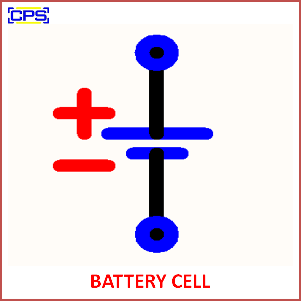A battery cell is a basic electrochemical unit that generates electrical energy from chemical reactions within it. It consists of two electrodes (an anode and a cathode) and an electrolyte, which facilitates the movement of ions between the electrodes.

Key Features of a Battery Cell:
- Electrodes:
- Anode (Negative Terminal): Releases electrons during discharge.
- Cathode (Positive Terminal): Accepts electrons during discharge.
- Electrolyte: A medium (liquid, solid, or gel) that allows ion transfer between the electrodes while preventing direct electron flow.
- Chemical Reaction: Converts stored chemical energy into electrical energy through oxidation and reduction reactions.
- Voltage: The potential difference between the anode and cathode, typically ranging from 1.2V to 3.7V per cell, depending on the chemistry.
Types of Battery Cells:
- Primary Cells: Non-rechargeable (e.g., alkaline, lithium primary cells).
- Secondary Cells: Rechargeable (e.g., lithium-ion, nickel-cadmium, lead-acid).
Applications:
- Powering portable devices (e.g., smartphones, flashlights).
- Automotive applications (e.g., car batteries, EV batteries).
- Energy storage systems (e.g., renewable energy storage).
- Backup power supplies.
Example:
A common AA battery is a primary cell, while a lithium-ion cell in a smartphone is a secondary cell. Multiple cells connected together form a battery pack.
